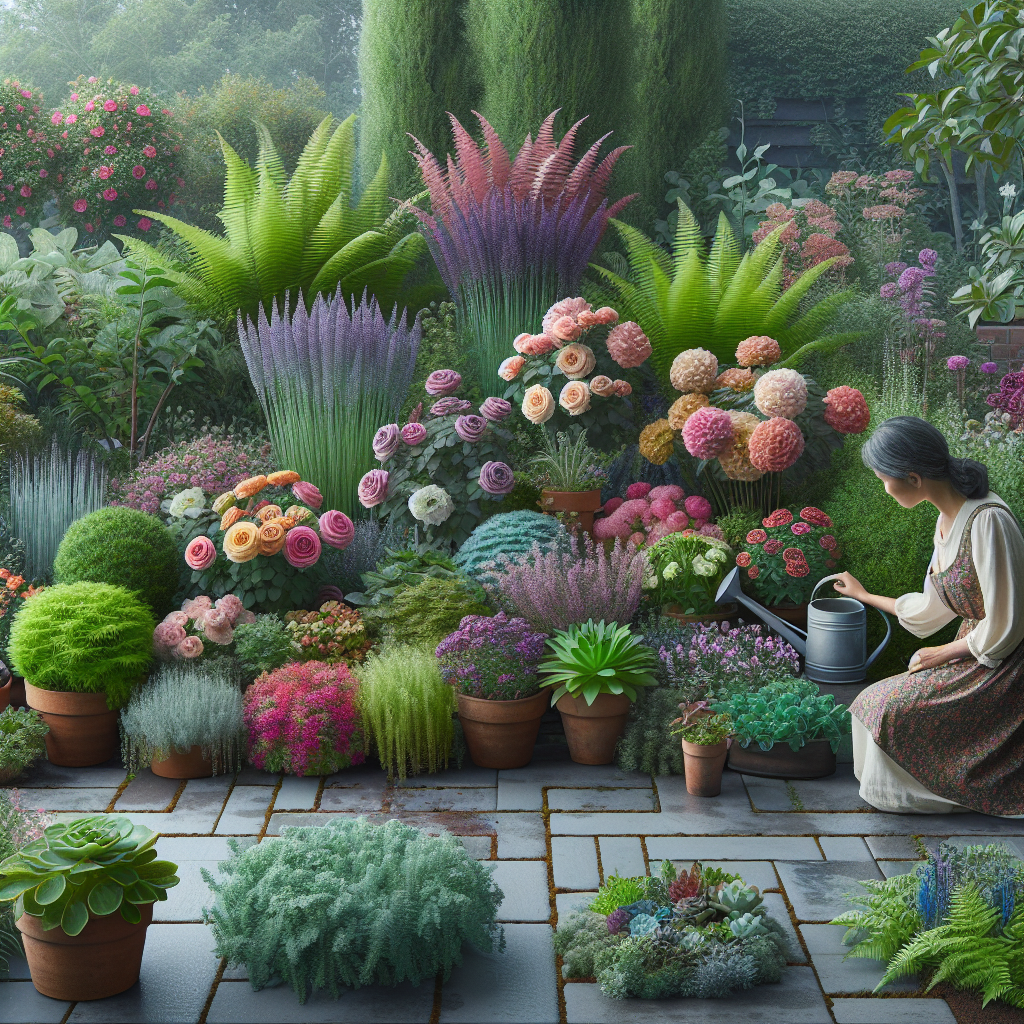Choosing the Right Perennials for Your Garden Beds
As the spring sunshine begins to warm the soil, burgeoning gardeners and seasoned green thumbs alike turn their attention to the perennial question: which plants should grace their garden beds this year? Perennials, with their ability to return year after year, offer a sustainable and evolving tapestry of color and life to your outdoor spaces. However, selecting the right perennials requires a harmonious balance between your garden’s conditions and the plants’ needs. In this blog, we will explore key considerations and tips for choosing the most suitable perennials to enhance your garden beds.
Understand Your Garden’s Microclimate
Before you jam your spade into the earth or purchase your first plant, it is critical to understand the unique microclimate of your garden. Microclimate refers to the specific climate conditions in a small space, which can considerably differ from the general area’s climate. Factors include sunlight exposure, wind patterns, and moisture levels.
For instance, The United States Department of Agriculture’s Plant Hardiness Zone Map is an excellent resource to determine which plants will thrive in your local area’s climatic conditions. Cross-reference your zone with the plant labels to ensure compatibility.
Soil Matters: Getting to Know Your Ground
The soil serves as the foundation of your garden’s health. Different perennials flourish in varying types of soil, ranging from sandy to clay, each with distinctive drainage properties and pH levels. You can perform a simple soil test using a home soil testing kit to determine your soil’s characteristics and adjust accordingly with amendments such as compost or lime. A well-balanced soil sets the stage for a perennial garden full of vigor.
Light It Up: Factoring in Sunlight
Sun exposure is a pivotal aspect that dictates which perennials will suit your garden best. Observe and record how sunlight hits different parts of your garden throughout the day. Full sun, partial shade, and full shade areas each have their associates in the plant world:
- Full Sun Perennials: These plants require at least six hours of direct sunlight each day. Lavender and Black-eyed Susans are stellar examples that thrive in generous sunlight.
-
Partial Shade Perennials: These plants enjoy a mix of sun and shade. Consider planting Foxgloves or Coral Bells, which can perform well with moderate exposure.
-
Full Shade Perennials: Areas that receive less than three hours of direct sunlight, or none at all, are well-suited for perennials like Hostas and Ferns.
Watering Wisely: Considering Moisture Needs
Moisture is another significant factor in perennial selection. It’s essential to match plant preferences with your garden’s natural moisture level or your willingness to supplement with watering. Some perennials, like Astilbes and Turtleheads, prefer consistently moist soil, while others, such as Sedums and Echinaceas, are drought-tolerant.
Size and Scale: Planning Your Plant Heights
When designing your perennial garden, consider the mature sizes of your plants. Knowing the eventual height and spread helps to create a layered, aesthetically pleasing arrangement. Place taller varieties such as Delphiniums and Ornamental Grasses in the back of your beds with shorter plants like Daylilies and Lavender in the foreground for a tiered effect.
Color Coordination and Blooming Cycles
Color schemes can significantly impact the overall appearance of your garden. Decide on a color palette that complements your home and existing landscape. Perennials like Salvia offer deep purples while Yarrow can bring vibrant yellows to your beds.
Timing is equally important; select perennials with different blooming periods for continuous color. The Royal Horticultural Society offers an invaluable plant finder to research blooming times alongside a wealth of other plant characteristics.
Plant Personality: Choosing for Character and Texture
Beyond colors and sizes, consider the unique textures and shapes perennials can introduce to your garden. The feathery foliage of Ferns contrasts delightfully with the bold leaves of a Peony. Additionally, features such as seed heads, bark texture, and winter silhouettes can provide year-round interest.
Companion Planting: The Art of Good Neighbors
Companion planting not only enhances the visual appeal but can also promote a healthier garden ecosystem. For example, Marigolds are often touted for their ability to deter pests, making them excellent neighbors for many perennials.
Maintenance and Care: Managing the Long Haul
Perennials may require less maintenance than annuals, but they are not maintenance-free. Select perennials that match your dedication to gardening chores. Some, like Daylilies, require practically no care, while others, such as Roses, may demand more attention with pruning and pest control.
Species Selection: Tried and True or Uniquely You?
Finally, it’s decision time. Do you go with tried-and-true perennials like Coneflowers and Daylilies, or perhaps something more exotic like the Himalayan Blue Poppy? Your choices should reflect both your personal taste and your garden’s conditions.
Starting with these foundational considerations, you’re well-equipped to make informed choices for your perennial garden this season. Whether you’re rebuilding an existing bed or starting anew, the perfect selection of perennials can transform your garden into an enchanting escape year after year.
In conclusion, creating a perennial garden that flourishes involves thoughtful preparation and plant selection. By understanding your garden’s unique conditions and planting accordingly, you’re on your way to curating a beautiful and resilient array of nature’s finest. Remember to take it step by step, and don’t be afraid to get your hands dirty – after all, gardening is both an art and an adventure in patience.
Please note that links to products may be affiliate links which means I get a small commission at no extra cost to you if you make a purchase.


